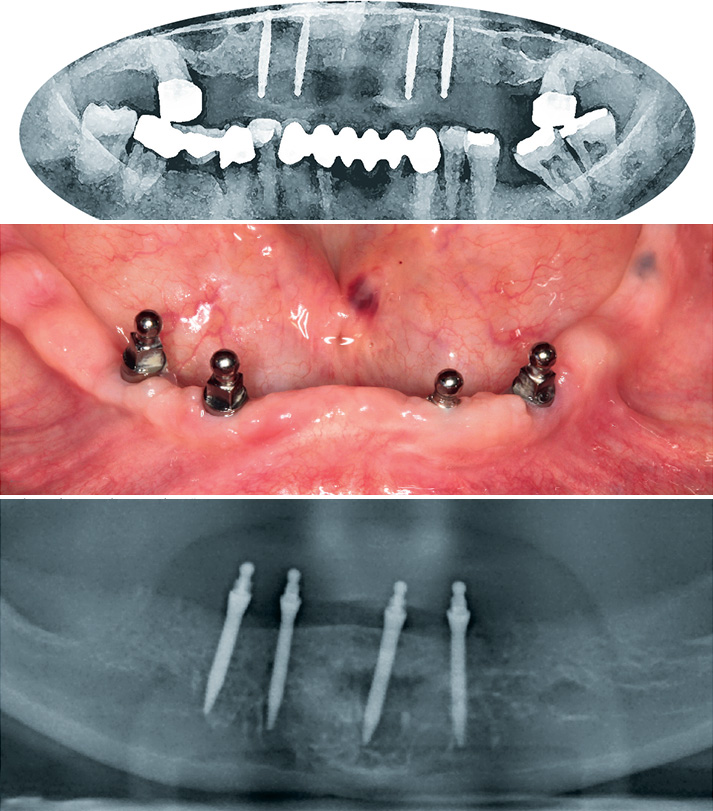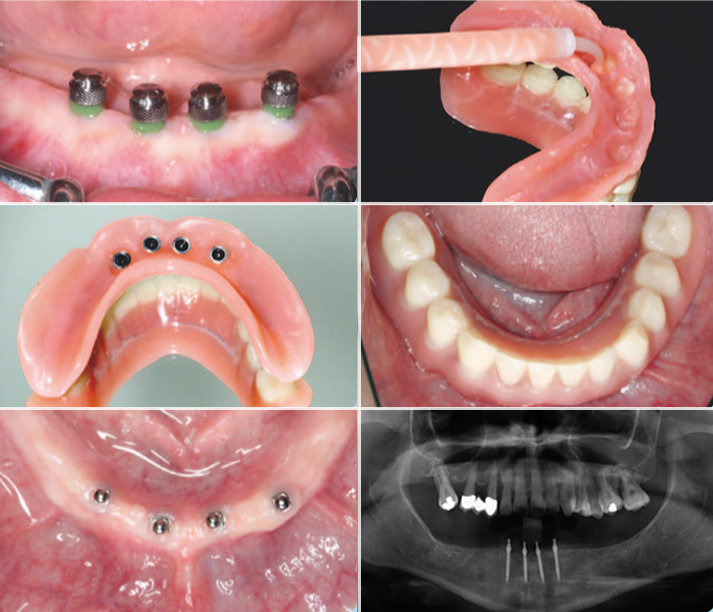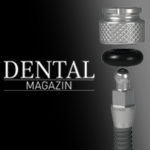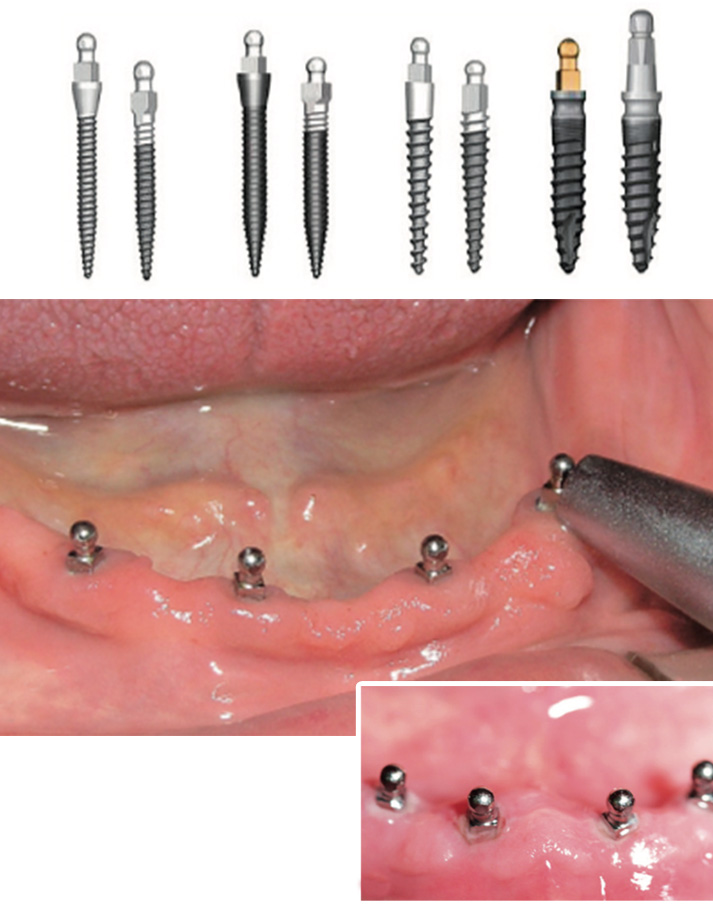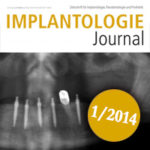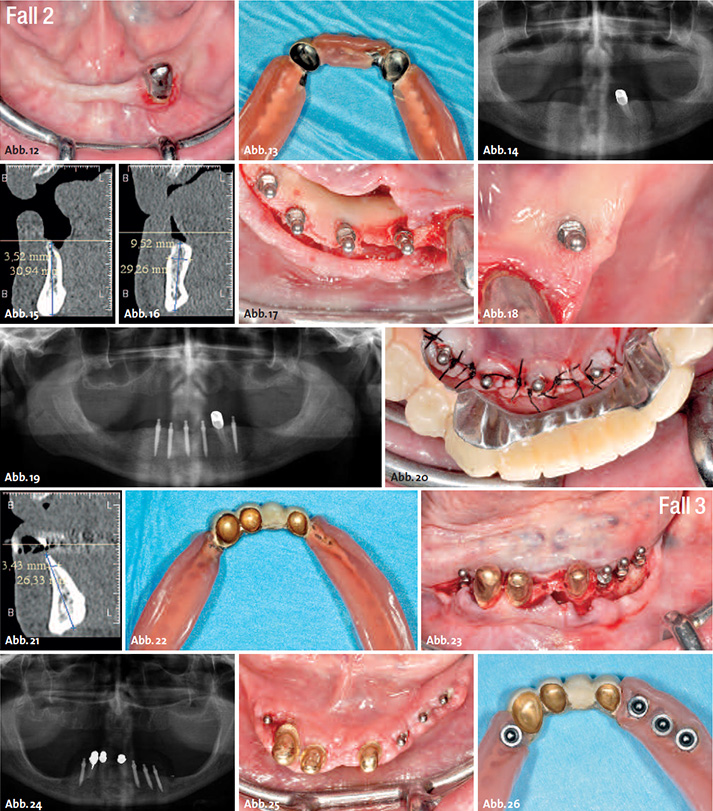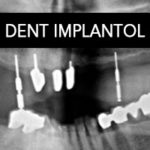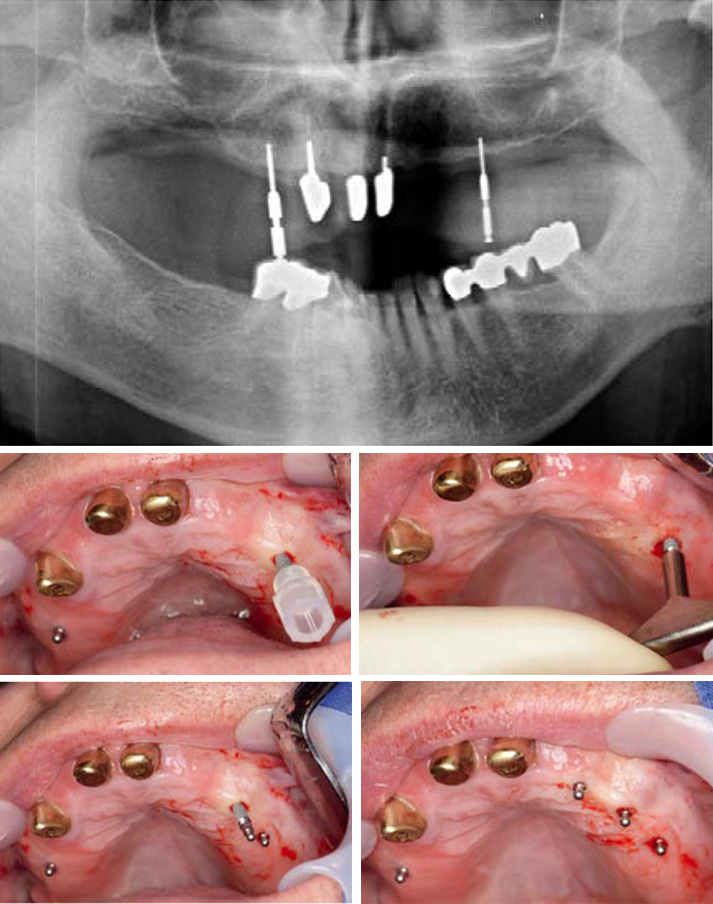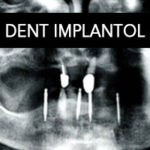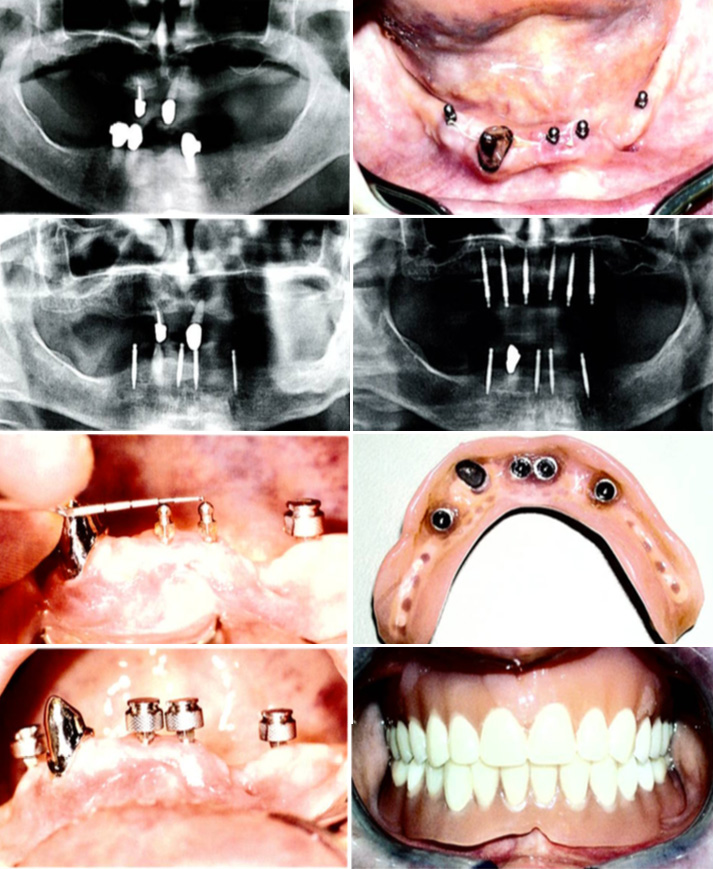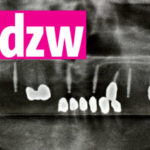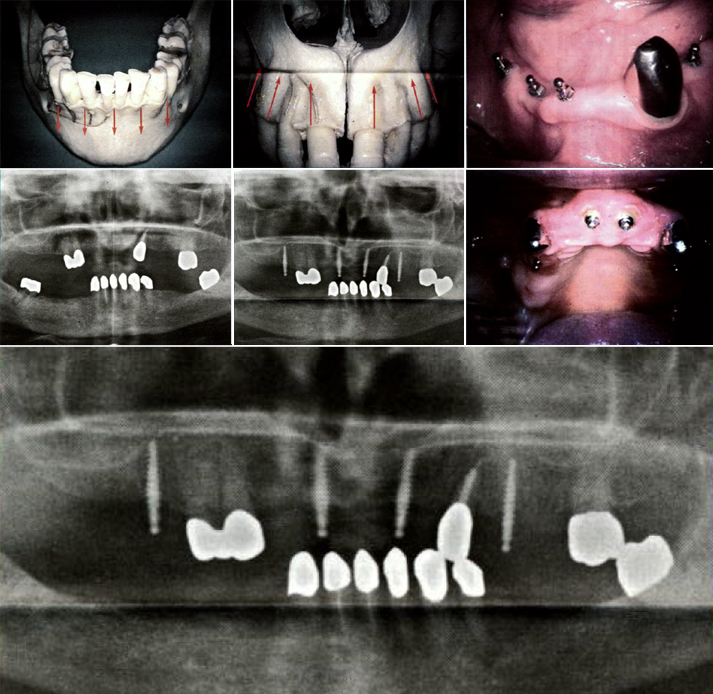Stomatolog / vol.18 – December 2012 – Immediate implantation following tooth extraction. A clinical case study.
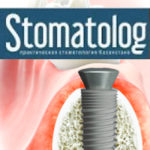
Stomatolog / vol.18 • December 2012
Immediate implantation following tooth extraction. A clinical case study.
Dr. Winfried Walzer
The placement of the implant in a post-extraction bed is a technique, that has been developed especially within the last 10 years.
For immediate implant placement we have the option for an incision and detachment or for a flapless surgery. Generally there is a tendency for a flapless procedure when there is adequately keratinized gingival and a correctly aligned gingival margin.
Since primary stability is more difficult to achieve in immediate implant placement the aspect of choosing the ideal implant body becomes more important.
Case Description: A 53 year old patient presents himself with a reduced dentition in the mandible.
To give the patient a fixed restoration, five implants have been inserted – two in the left, and three in the right mandible.
The implant of choice here was a BL (bone level) Morse conical connection Implant D4,3/L13mm from C-TECH. The shape, angle and depth of the threads are specifically conceived to increase contact surface with the bone and improve primary stability. The root form anatomical design with a slight taper at the implant collar is the ideal design to achieve good bone contact and reduce the gap between implant and bone at the alveolar crest.
The second stage surgery is minimal invasive through the internal hex connection. The shape of the healing abutment minimizes the trauma on the soft tissue, since we do not expose the implant sholder by elevating a flap. The Morsel locking tapered internal conical hex connection of the BL Implant comprises two proven elements in implant prosthetics; a tapered Morse conical connection with a hex at the base. The conical taper provides a cold welding seal which locks the abutment into its final seated position. The hex at the base of the implant provides an optimal positioning index. The combination of taper and hex deliver a high level of prosthetic precision while ensuring against abutment loosening.
Summary: There is not enough reliable evidence proving higher success of immediate implant placement over delayed implantation. Post-extraction implants have survival rates similar to implants placed in healed sites.
If primary stability is achieved, immediate implant placement following tooth extraction can be a viable alternative to delayed placement.
The benefit of immediate implant placement for the patient is obvious:
First of all it reduces the treatment time and if immediate loading is an option, a temporary removable denture can be avoided.
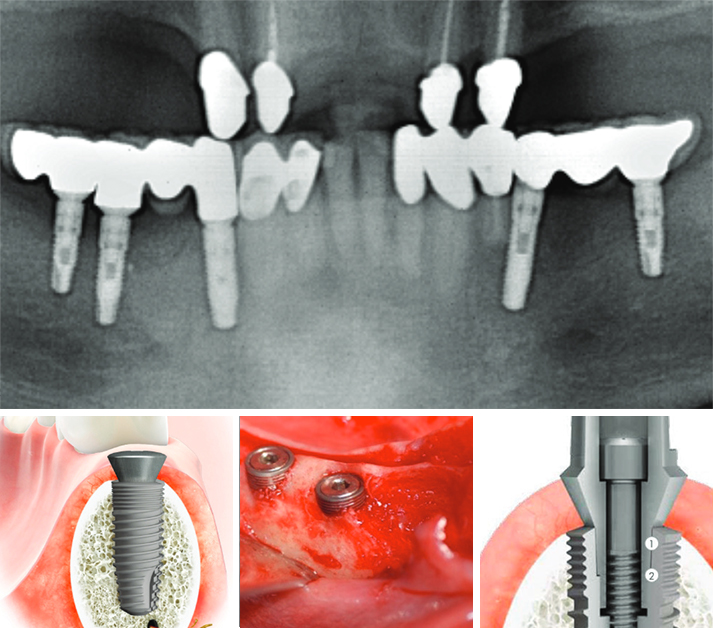
References
1. Schulte W, Himke G. The Tübinger immediate implant quintessence 1976; 27:17-23
2. Chen S., Buser D., Implants in post-extraction sites: A Literature update. In: Buser D, Belser U, Wismeijer D (eds). ITI Treatment Guide. Vol.3: Implants in extraction sockets. Berlin: quintessence, 2008
3. Chaushu G. Chaushu S, Tzohar A, Dayan D. Immediate Loading of single tooth implants: immediate versus no immediate implantation. A clinical report. Int. Joral Maxillofac. Implants 2001:16:267,72
4. Nordin T, Graf J, Frykholm A, Hellden LB. Early functional loading of sand-blaster and acid-etched (SLA) Straumann implants following immediate placement in maxillary extraction sockets. Clinical and radiographic result. Clin Oral Implants Res. 2007; 18(4):441-51
5. Chen ST, Darby IB, Reynolds EC, Clement JG. Immediate Implant Placement post extraction without flap elevation. A prospective clinical study of non-submerged immediate implants: Clinical outcomes and esthetic results. J Periodontol. 2009 Jan; 80(1):163-72
6. Buser D, Halbritter S, Hart C, Bornstein MM, Grutter L, Chappuis V, Belser UC. Early implant placement with simultaneous guided bone regeneration following single-tooth extraction in the esthetics zone: 12-mouth results of a prospective study with 20 consecutive patients. J Periodontol. 2009 Jan; 80(1):152-62
7. Pieri F, Aldini NN, Fini M, Corinaldesi G. Immediate occlusal loading of immediately placed implants supporting fixed restorations in completely edentulous arches: a 1-years prospective pilot study. J Periodontal. 2009 Mar; 80(3)411-21
8. Cooper LF1, Rahman A, Moriarty J, Chaffee N, Sacco D. Immedite mandibular rehabilitation with endosseous implants: simultaneos extraction, implant placement, and loading. Int J Oral Maxillofac implants. 2002 Jul-Aug; 17(4):517-25
9. Crespi R, Capparè P, Gerlone E, Romanos GE. Immediate occlusal loading of implants placed in fresh socked after tooth extraction. Int J Oral maxillofac Implants. 2007 Nov-Dec; 22(6):955-62
10. Wagenberg B, From SJ. A retrospective study of 1925 consecutively placed immediate implants from 1988 to 2004. Int J Oral maxillofac Implants. 2006 Jan-Feb; 21(1):71-80
11. Kahnberg KE. Immediate implant placement in fresh extraction sockets: a clinical report. Int J Oral Maxillofac Implants. 2009 Mar-Apr; 24(2):282-8



